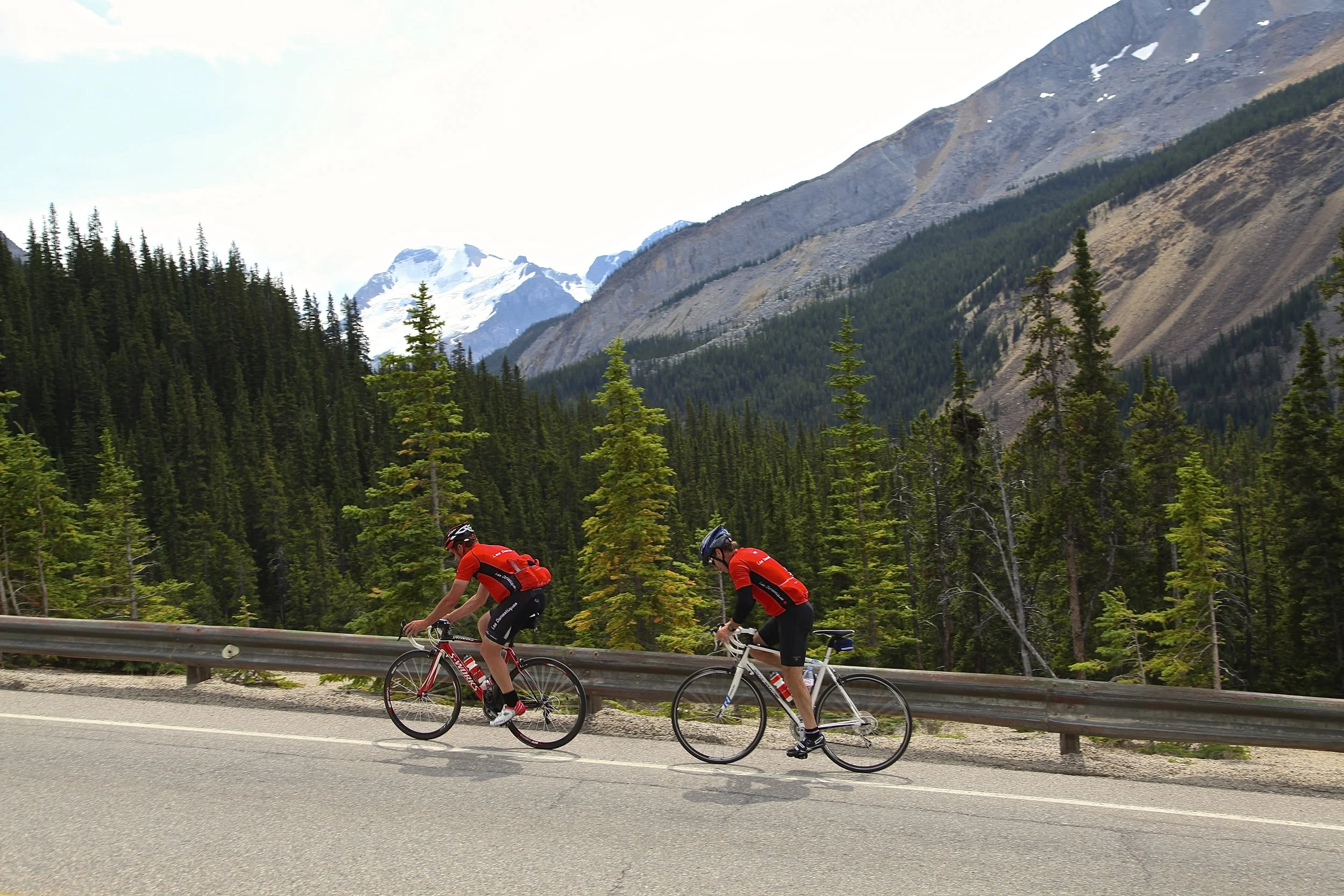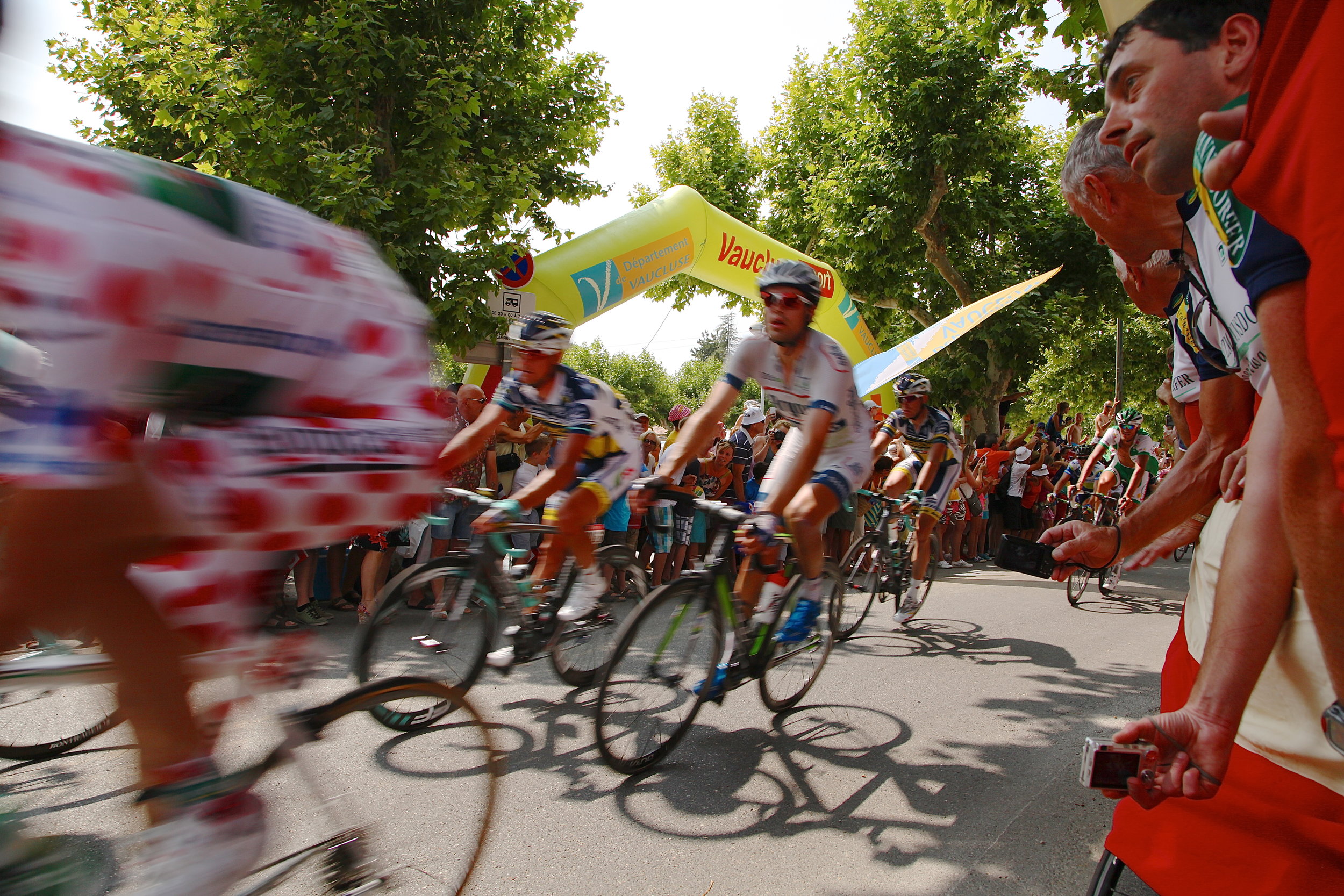
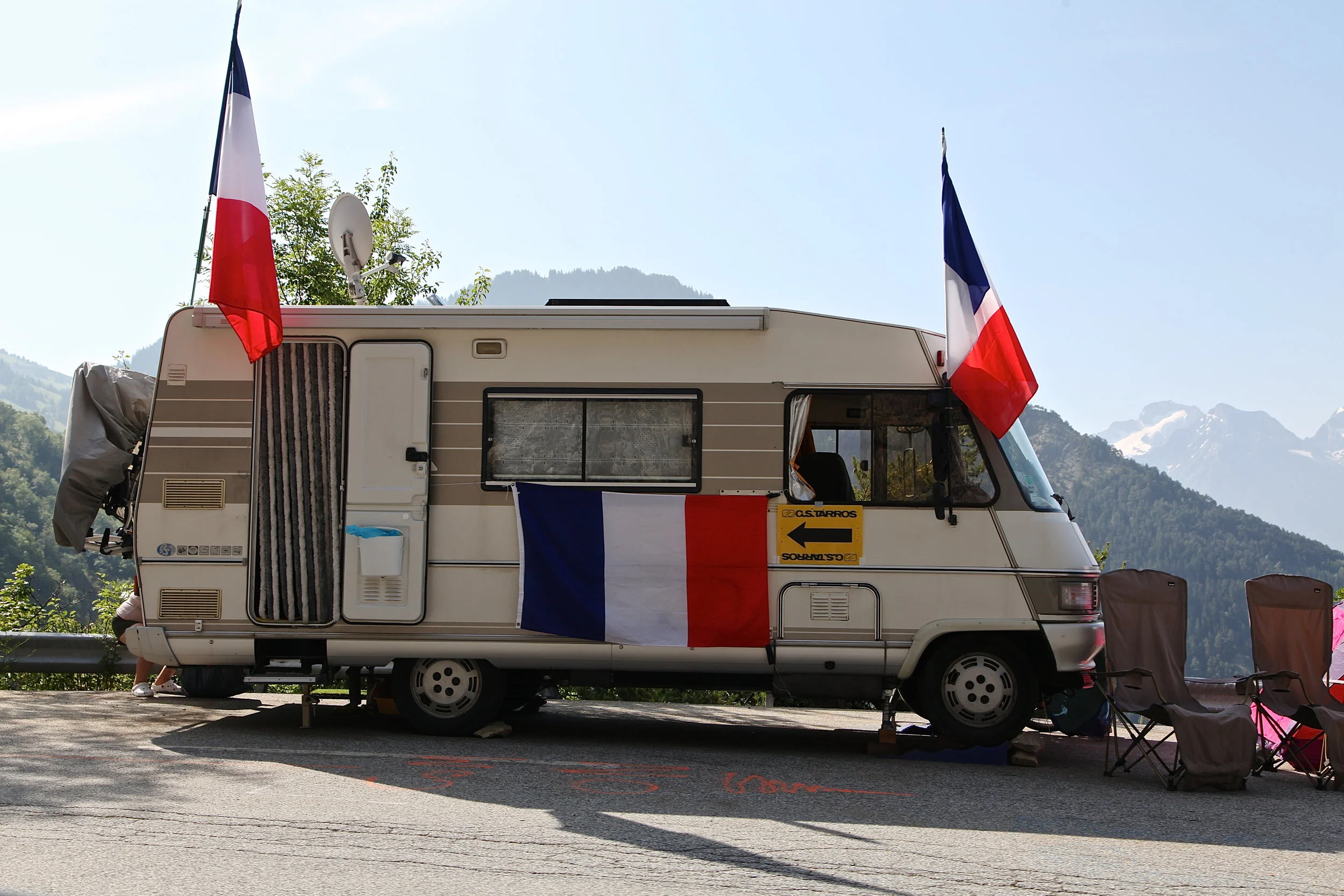


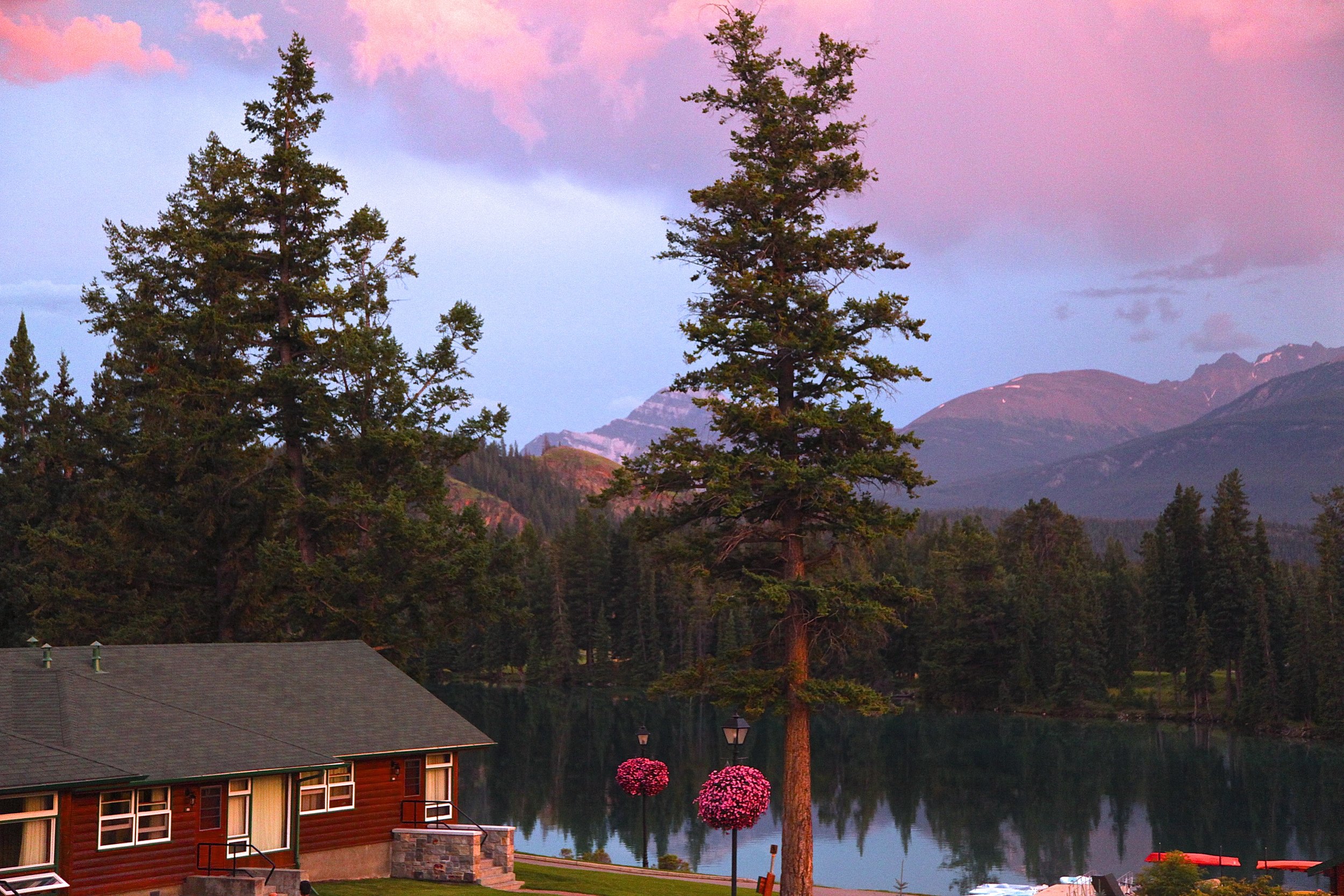
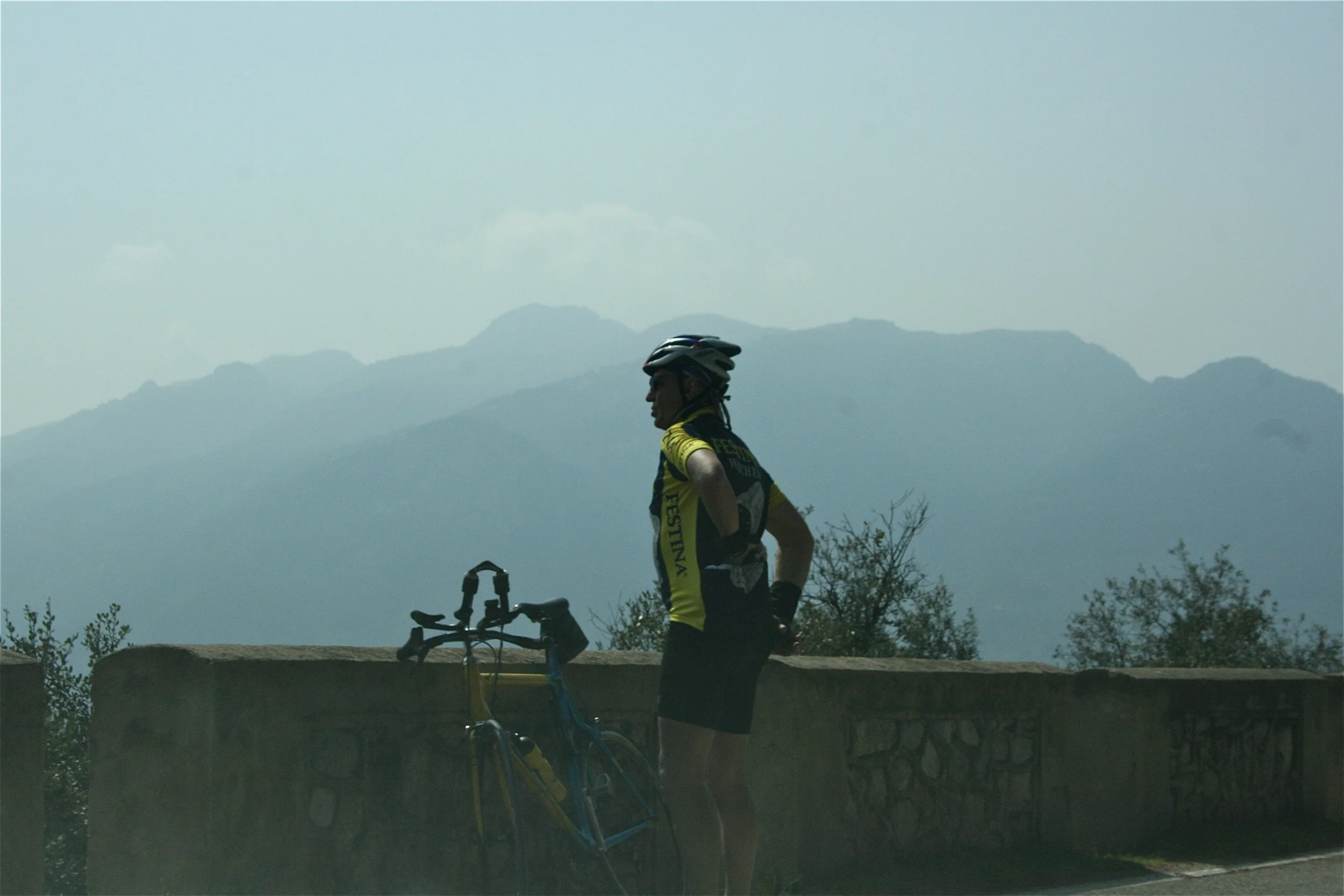
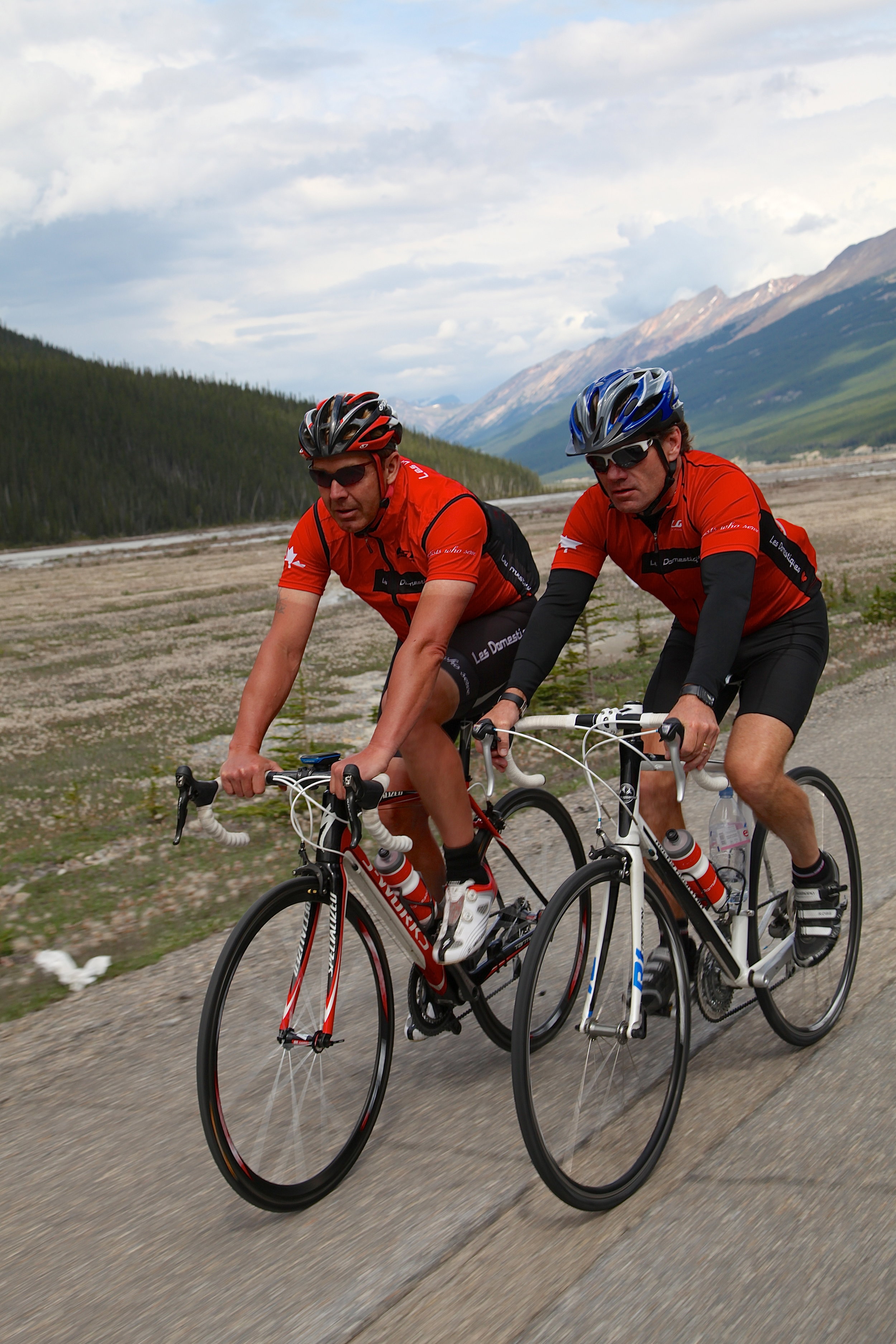
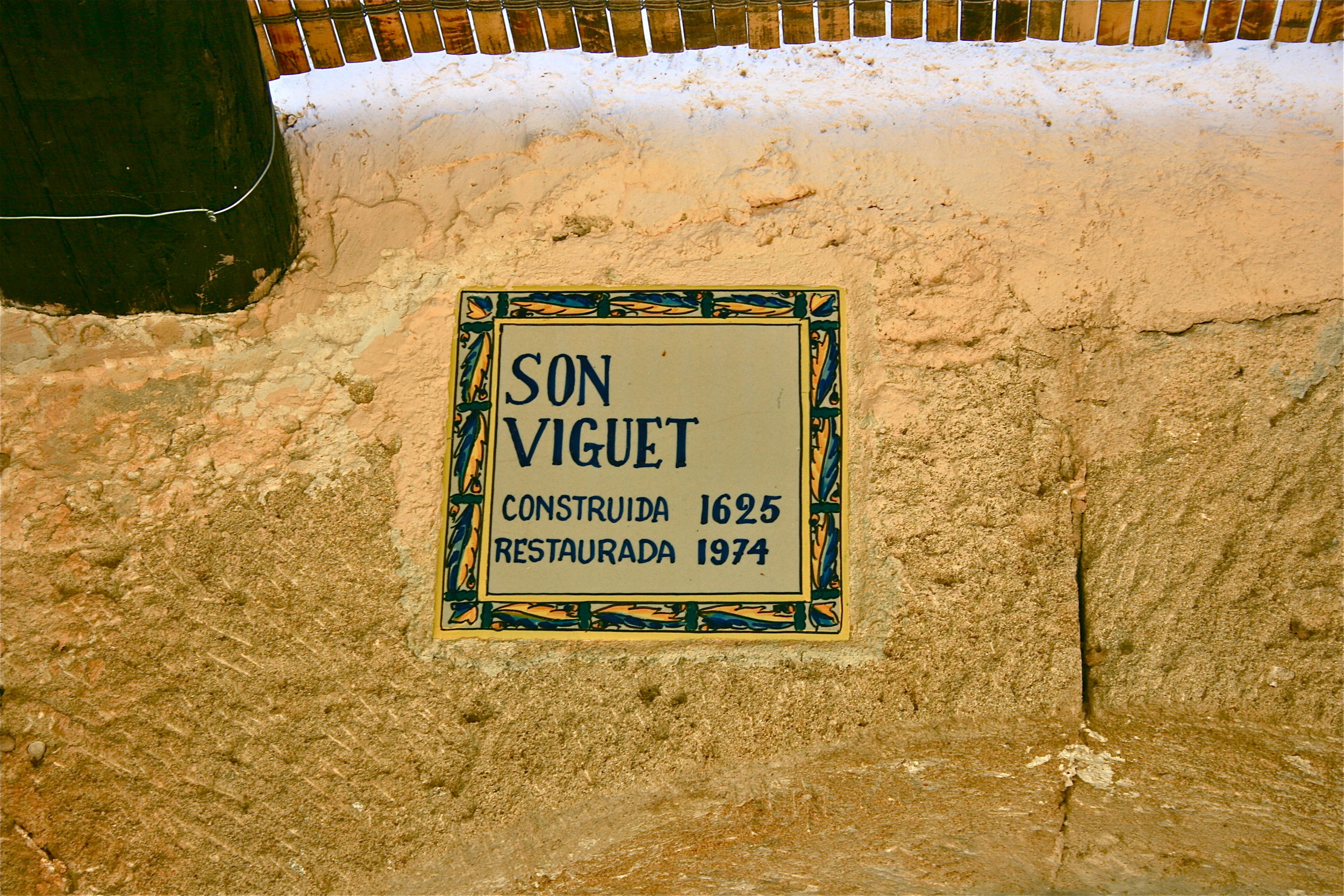
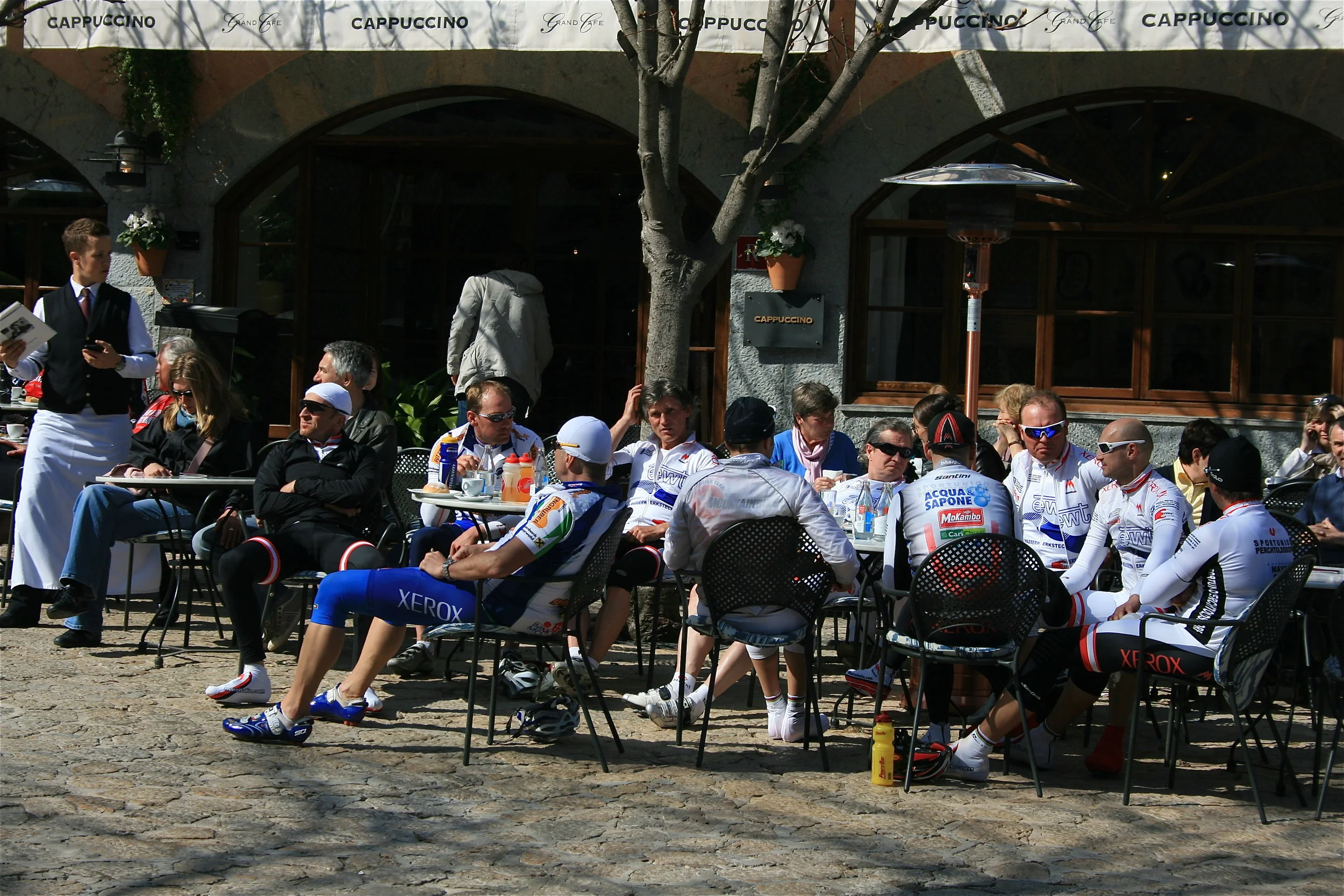
Pelotons of cyclists emerge this time of year, small streams at first, and then as the weather warms, in far greater numbers. A sure sign of spring. They stream along exurban back roads across Canada. It’s no longer just a European thing. Each weekend, my husband Tim is among them and has been for years, long before it was de rigueur. Yes, I am married to a MAMIL—a middle-aged man in Lycra.
Some call road riding the new golf for networking and deal making among the business elite and those who want to be. Easier on joints but the type of sport where mental toughness is critical, it’s also perfect for aging athletes who enjoy kicking butts of those decades younger. Others ride to raise money for worthy causes. To be sure, the vast majority of hardcore road riders are male—not the toodler from vineyard to vineyard like me—I’m talking the “where’s that 19% grade so I can feel the burn” type of rider. This is by far and away a guy thing.
Tim tries to explain it to me. “It gets me outside. It gets my body moving. I feel connected. It’s even kind of a spiritual thing," he says.
Ok, this notion of connecting with one’s higher self on two wheels made me curious. If you could road ride anywhere in the world, where would you go? And what life lessons, what epiphanies, might emerge? With Lycra and pedals packed, I agreed to set off on a road riders' odyssey to learn more about these MAMIL creatures and their bucket list of epic rides.
Mallorca
To grasp the true road rider ethos, I turn to our family friend Erik Jensen, born just outside of Copenhagen, perhaps the world’s most bicycle-friendly city. Cycling is in his bones. He’s a domestique by nature—that’s the French cycling term for a road racer that rides to serve the greater good of the team. On the mere mention of exploring a cycling bucket list, he begins confirming weather patterns in March for our first stop: Mallorca, Spain.
Two months later, I’m gazing with morning coffee in hand across the pool terrace of our 400-year-old mountaintop finca. It’s a restored farmhouse overlooking Mallorca’s ancient southwestern port of Andratx.
Erik has puttered since dawn, checking tire pressures, tweaking breaks on our feather-light Spanish-made bikes. You know you’re in cycling country when even basic rentals are worth seven grand, give or take. The 15% grade of our driveway is early warning—these mountain roads aren’t for the faint of heart.
There are many reasons to visit this soulful Balearic isle, a hop east across the Mediterranean from Barcelona. Each spring, however, serious road riders from around the globe, some destined for the Tour de France, gather here for one reason: spring training. These otherworldly landscapes reveal cycling’s inner sanctum.
The mountains, not modern engineering, define heart-stopping western coastal routes. We rode past Valldemossa’s Carthusian Monastery onto the sublime Moorish village of Deià. This perched medieval enclave has attracted boho exiles since the turn of the last century. I imagine Picasso swimming off its small rocky beach. I see in that coastal view why English "poeta" Robert Graves came to visit in 1929 and never left.
To really scare your Louis Garneau cycling shorts off, though, you have to pedal to the northern beach town of Pollença then climb the hairpins to the tip of the Cap de Formentor peninsula. Mind the pebbly road surface and the erosion between the posts of its rickety guardrails—the only barrier between riders and a thousand-foot swan dive into the Mediterranean.
Still, it’s the bragging rights of conquering Sa Calobra that cycling insiders yearn for here. That’s our goal today, or more specifically, the classic Cobra loop. “It’s all about the journey,” Erik smirks as we pedal off northwest from the interior town of Inca. Soon his meaning is clear.
A 17-mile ascent heads up the Serra Tramuntana bearing southwest along the coast. An old Roman aqueduct, at last, announces the turnoff to the notorious beach cove 7.5 miles below. No stopping—steep, tight hairpins help build crazy descent speeds that can spook even veterans. Then too quickly it’s all over. The serpent’s coils are less entertaining on the way back up, laid out across the sometimes barren valley, like, well, a cobra.
“We’re still not at my favourite part yet,” says Erik at the top. The climb continues past two unlit tunnels near Mallorca’s highest mountain pass. Then it comes—ten miles of mind-blowing, sweeping serpentines that help build speeds up to almost 50mph, or so I’m told. I catch up in the support truck only near the shores of the Port of Sóller below. “Now that’s my favourite part,” says Erik.
Later, over local beers and succulent lamb shoulder, I marvel at how our Danish domestique can translate every ride into a parable of sorts. He jests, “So here’s the lesson—people obsess about the Cobra. But don’t obsess about the end game or you’ll miss the fun of the journey.”
The discussion soon turns to our next stop: the French Alps.
Alpe d’Huez
If Mallorca is the serene training haven for cycling insiders, France’s Alpe d’Huez is the brazen holy grail of competitive road riding. It beckons all comers to measure up against its 21 punishing curves, climbing 3700 feet over just nine miles. Boot up your Strava—a small garment computer that measures time, speed, and other vitals to compare against a global database of riders and rides—this is the big one. And while many cyclists like Tim pedal selflessly for worthy causes, when it comes to the Alpe d’Huez, road riders became deeply competitive creatures.
“I know my exact time on my last ascent of the Alpe d’Huez,” says Erik. I chuckle at his emphatic tone. “No really, I know the exact time.” Then I get it—for road riders, this is something seared into one’s memory, like where you were when John Lennon died.
Located 14 miles due east into the alps from Grenoble, this crazy French hill has been a defining climb of the Tour de France since Fausto Coppi dominated its last four miles in 1952. It’s where Giuseppe Guerini collided with a spectator, got back up, and still won the stage in 1999. Erik can cite these deciding Tour moments chapter and verse with a zealot’s gleam in his eyes. He may know his precise Alpe d’Huez time, but no numbers are forthcoming.
There are tougher, longer, and even more beautiful Tour climbs than the Alpe d’Huez. Still, there are none more storied.
It’s five days before the Tour de France arrives here. We find prime perches along each switchback already claimed by campers festooned with national flags and patio lanterns. Stunning alpine panoramas serve as backdrop while revelers share wine over portable barbeques, barely off the snaking road. Everybody waves. Cheers. The party had begun.
This crush of drunken fans makes for some nasty mayhem on the big day ahead—and that’s just the way everyone likes it. This is, in essence, the Churchill Downs of cycling, less the well-behaved fans in big hats. Difference is, you can’t ride a speeding thoroughbred down the stretch of the Kentucky Derby. You can, however, climb the Alpe d’Huez, and measure your times against all who’ve gone before. So how did the boys do? Let’s just say Tim is built to climb, but neither is divulging specifics.
Later, on a patio in the ungilded jock town of Le Bourg-d'Oisans, they debrief the climb.
"Where next?" I ask.
Erik smiles, then answers. “Much closer to home.”
The Canadian Rockies
It could be said, their humbling enormity makes the Canadian Rockies the least likely place to explore on a bicycle and, ironically, maybe the best.
I wake our first morning to a bleating elk calf outside my bedroom window at Jasper Park Lodge. Only in the Rockies are there baby creatures five feet tall at the withers and just wandering by like a stray cat. The scale of nature here is at once awe-inspiring and unnerving—not a place one pedals off into unprepared.
As agreed, we meet 62 miles down the Icefields Parkway—beyond the pounding waters and lichen-covered gorge walls of the Athabasca Falls; past fleecy mountain goats licking mineral-rich silt from the riverbed; to the top of Sunwapta Pass—this is where the Atlantic and Arctic watersheds divide. Here, Erik takes the truck to our next destination. It’s my turn to pedal.
He knows every climb and curve of our 350-mile route. Still, the lovely rollers he promised past the Columbia Icefields are short lived. I’m not near bold enough to relish the ensuing descent—almost 1400 feet in six miles. My husband Tim dutifully guards my back wheel while a convoy of loaded lumber trucks blows by. I think I smell their brakes burn, or are those mine? Hands numb from the vibration, I feel my forearms seizing; and ahead, the Big Bend, another precipitous switchback ending on broad gravel flats far, far below. I am belligerently determined not to die here.
At the bottom, however, everything changes. The road goes quiet. The descent eases. The lovely rollers return. In the next ten miles, I find both my nerve and that mythical second wind—heart pumping, legs strong, the whir of the wheels. There’s no fear, no pride nor any other noise of ego. There is just this moment and my next pedal stroke. And in this cycling gestalt, my road warrior’s passion for the sport is clear—the most powerful moments on two wheels don’t exalt ego, they transcend it; they humble us—an intoxicating paradox at the heart of every hardcore road rider, every MAMIL, including mine.
“Where’s Barb?” Tim interrupts mid-epiphany. We find Erik’s wife two miles back with a punctured tire just before the outwash plain known as Graveyard Flats. No cell service, no tubes and six miles from the Rampart Creek hostel. No one even thinks to ask whether Erik will come looking for us. He’s our domestique. In the meantime, Tim opts for a dip in the Sunwapta River while Barb and I bask in the waning afternoon sun—three grateful, Lycra-clad specks in one dazzling panorama.
